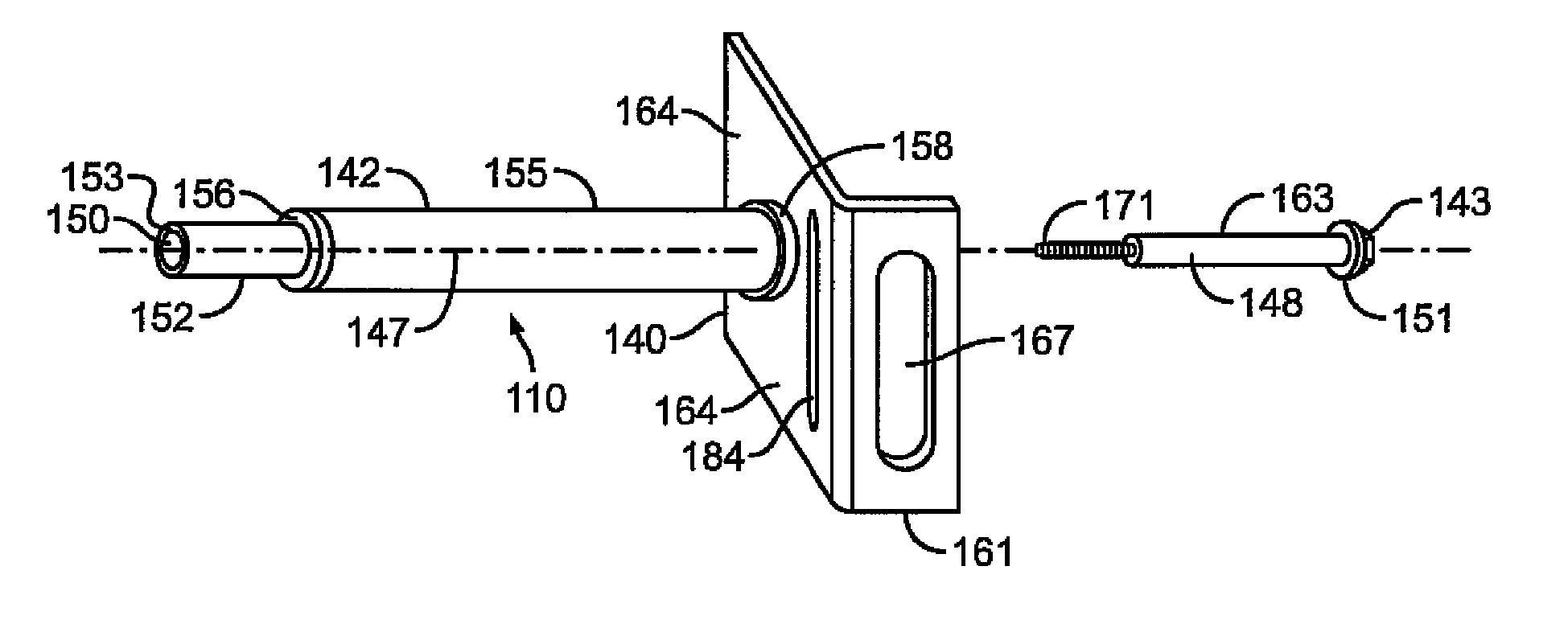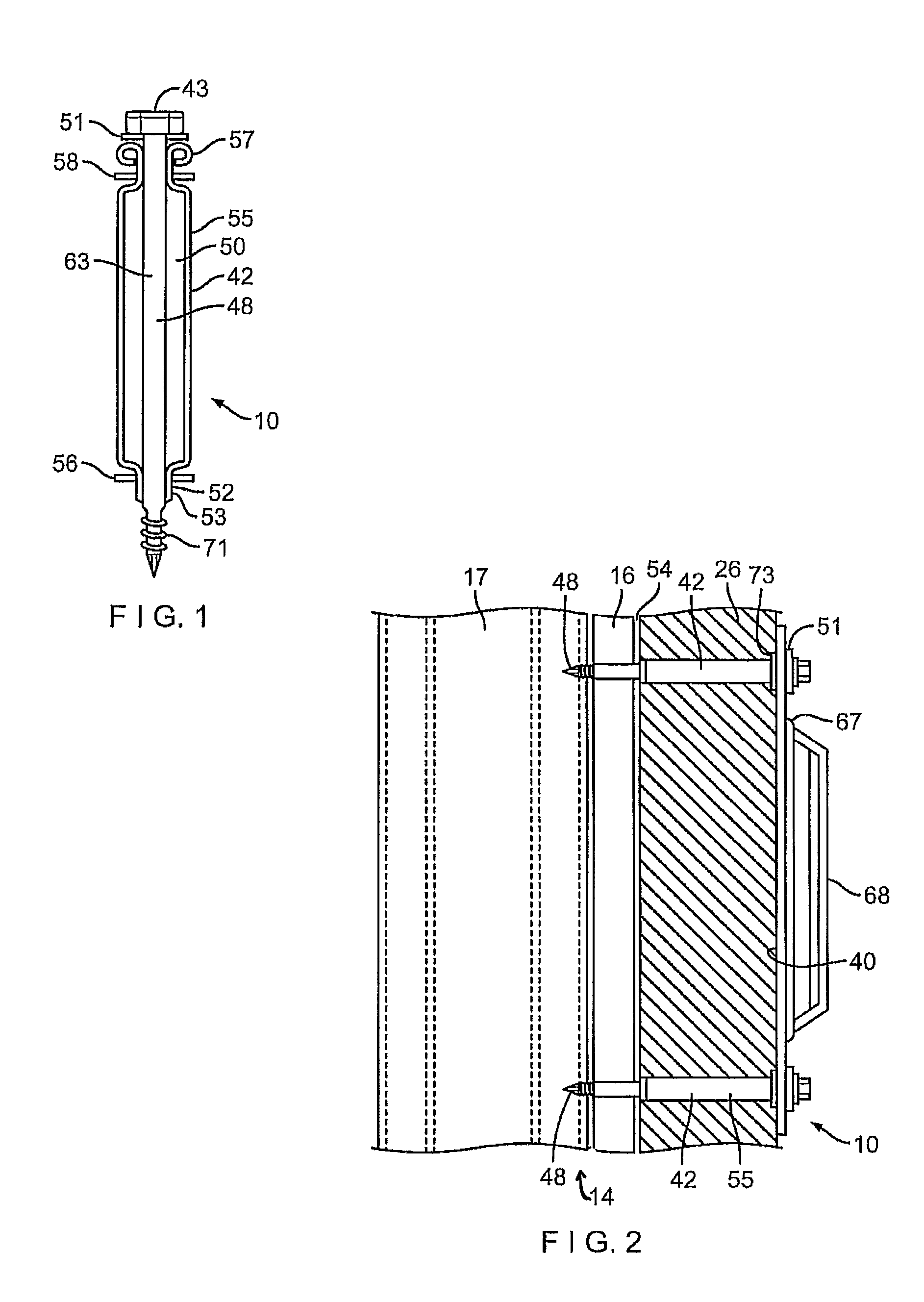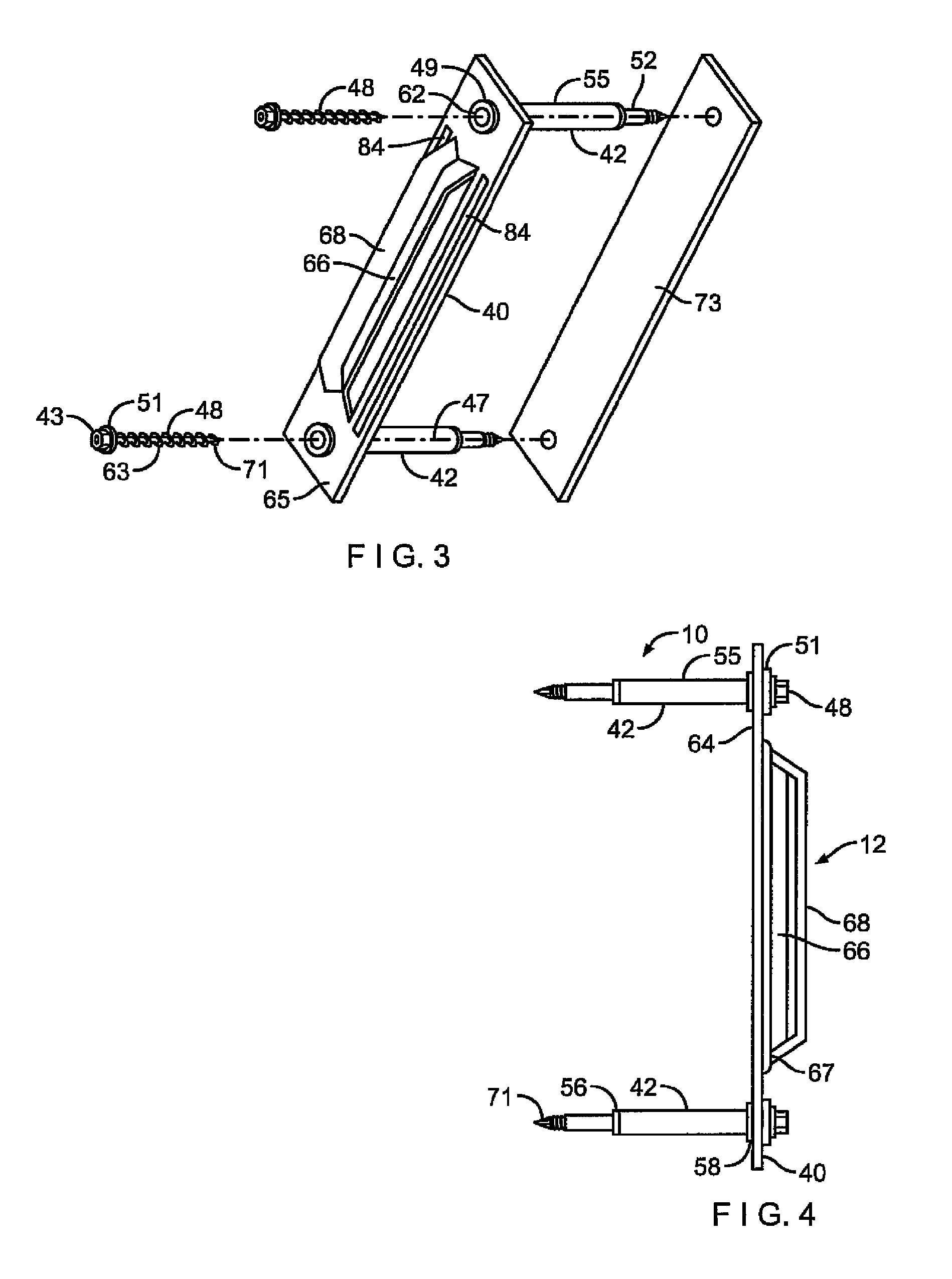Thermally isolating tubule for wall anchor
a tubule and wall anchor technology, applied in the direction of threaded fasteners, screws, washers, etc., can solve the problems of system insufficient maintenance of insulation integrity, loosening of studs, affecting the service life of the stud, etc., to achieve high efficiency, prevent disengagement, and restrict thermal conductivity
- Summary
- Abstract
- Description
- Claims
- Application Information
AI Technical Summary
Benefits of technology
Problems solved by technology
Method used
Image
Examples
Embodiment Construction
[0072]Before entering into the detailed Description of the Preferred Embodiments, several terms which will be revisited later are defined. These terms are relevant to discussions of innovations introduced by the improvements of this disclosure that overcome the technical shortcomings of the prior art devices.
[0073]In the embodiments described hereinbelow, the inner wythe is provided with insulation. In the dry wall or wallboard construction, this takes the form of exterior insulation disposed on the outer surface of the inner wythe. Recently, building codes have required that after the anchoring system is installed and, prior to the inner wythe being closed up, that an inspection be made for insulation integrity to ensure that the insulation prevents thermal transfer from the exterior to the interior and from the interior to the exterior. Here the term insulation integrity is used in the same sense as the building code in that, after the installation of the anchoring system, there i...
PUM
 Login to View More
Login to View More Abstract
Description
Claims
Application Information
 Login to View More
Login to View More - R&D
- Intellectual Property
- Life Sciences
- Materials
- Tech Scout
- Unparalleled Data Quality
- Higher Quality Content
- 60% Fewer Hallucinations
Browse by: Latest US Patents, China's latest patents, Technical Efficacy Thesaurus, Application Domain, Technology Topic, Popular Technical Reports.
© 2025 PatSnap. All rights reserved.Legal|Privacy policy|Modern Slavery Act Transparency Statement|Sitemap|About US| Contact US: help@patsnap.com



